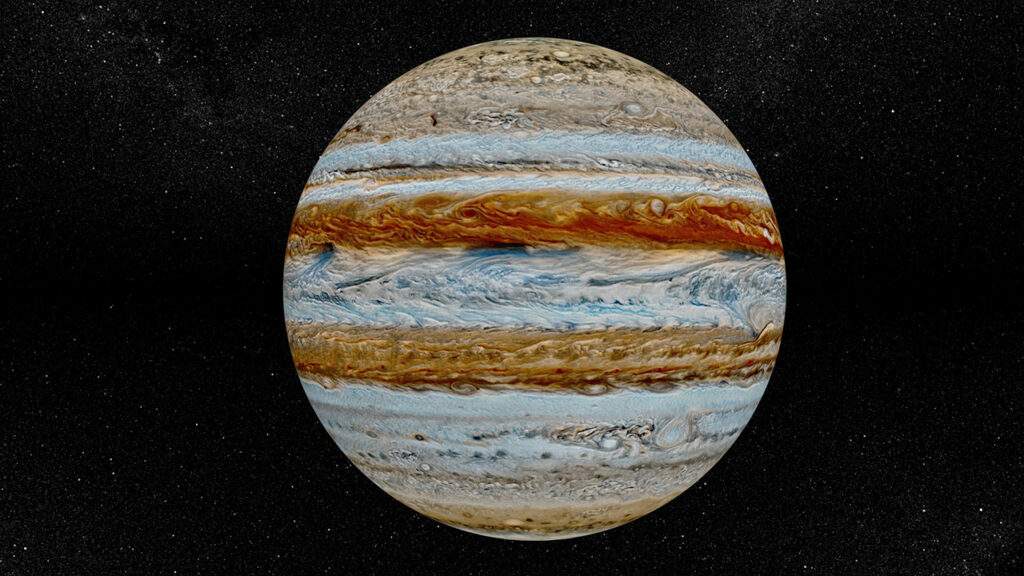Jupiter is the fifth farthest planet from the Sun in the solar system and also the largest planet in the solar system. Jupiter is a gas giant planet primarily composed of hydrogen and helium, with no apparent solid surface. In the West, it is named after Jupiter, the king of the Roman gods. In Chinese, it is called “Jupiter” and is related to the Five Elements theory.

Jupiter’s diameter is approximately 139822 kilometers, which is more than 11 times that of Earth. Its mass is approximately 318 times that of Earth and 2.5 times the total mass of all other planets in the solar system. Jupiter’s atmosphere is very thick, mainly composed of hydrogen and helium gas. It also contains small amounts of water, ammonia, and methane. The characteristics of its atmosphere are colorful cloud bands and intense storms. The most prominent feature on Jupiter is the Great Red Spot, which is a massive storm system that has been raging for at least 300 years. It is large enough to accommodate three Earths. It is believed that Jupiter has a dense core composed of rocks and metals, surrounded by multiple layers of metallic hydrogen and molecular hydrogen. The pressure and temperature inside are very high.
The average distance Jupiter travels around the Sun is about 5.2 astronomical units. Its orbital period is approximately 11.86 Earth years. Its average speed around the sun is about 13.07 kilometers per second. Jupiter is the fastest rotating planet in the solar system, rotating approximately once every 9.9 hours.
Many space probes have been sent to Jupiter for research, such as NASA’s Pioneer 10 and Pioneer 11, Voyager 1 and Voyager 2, and Juno. These probes provide valuable data about Jupiter’s atmosphere, magnetic field, and satellites.
Leave a Reply